- TOP
- Stories
- Deloitte Tohmatsu's Greenhouse: Encouraging Reflection and Awareness of the Management (3)
- Business Solution
Deloitte Tohmatsu's Greenhouse: Encouraging Reflection and Awareness of the Management (3)
By: Yoh Otsuka (Senior Fellow & Senior Consultant, Intelligence Group, Nikkei Business Publications)
The room used for tea ceremonies and practice is called a chashitsu. The master of the tea ceremony brings the utensils out to the tearoom, prepares tea, and entertains the guests. Some companies have tearooms in their offices. While the purpose is to entertain visitors to Japan, in many cases, the tearoom is a "different space" away from the daily routine, where inspiration and new ideas are expected to be generated. This article will introduce examples of businesses that have incorporated the functions of the tearoom into their operations.
First, let's start with an explanation of the tearoom used in a tea ceremony. People may have the impression it is a small room. Today, the basic floor area of a tearoom is four-and-a-half tatami mats, and sometimes it can be an eight tatami-mat room or even larger. On the other hand, there are tea rooms smaller than four-and-a-half tatami mats.
In fact, until the Muromachi period, tea was served in a large room with several dozen tatami mats, called a shoin. Later, a Sakai merchant named Takeno Jo'o, who was the teacher of Sen no Rikyu, built a four-and-a-half tatami-mat tea room modeled after a humble country house. This is said to be the beginning of wabicha.
An even smaller tearoom, known as the machi'an (still extant in Myoki'an, Oyamazaki Town, Kyoto Prefecture), which Rikyu is said to have built for Toyotomi (then Hashiba) Hideyoshi, is only two tatami mats in size. It is possible that Rikyu's purpose was to hold secret talks with Hideyoshi in this tiny space. It is said that the name machi'an came from Rikyu's implicit remonstration of Hideyoshi, who was in a hurry to achieve success.
Rikyu's device in the waiting room was a small entrance called the nijiri-guchi, which is approximately 60 to 70 square centimeters. Since it was impossible to enter while standing, visitors had to lower their heads and squeeze through on their knees. Rikyu's intention to have both samurai and merchants, regardless of their status, enter the tearoom with their heads low, gives us a glimpse of the idea of diversity.
Sessions are held in a space that resembles a tearoom
Some companies have set up "tearoom-like spaces" in their offices based on the idea that in a tearoom, people can get away from the hustle and bustle of daily life and engage in lively discussions in a way that transcends status and position. The Deloitte Tohmatsu Group has set up the "Deloitte Greenhouse" (hereafter "Greenhouse") in its Marunouchi, Tokyo office.
The Greenhouse is a facility for innovation that the Deloitte Tohmatsu Group operates in more than 30 locations around the world, and mainly offers sessions and workshops for corporate executives to discover clues to solving business issues.
The Greenhouse at the Tokyo office was designed in 2019 based on the concept of a "tearoom-like" space. The theme here is "wakei seijaku" (meaning that the master and the guests should be at peace with and respect each other) and "naturality," both of which reflect the spirit of the tea ceremony advocated by tea master Sen no Rikyu.
Upon entering the Greenhouse, visitors will find a passageway that resembles a bamboo grove. The bamboo is illuminated in the darkness, creating an illusory atmosphere. This passageway is called the "mind-changing tunnel," and it is designed to help visitors to leave the hustle and bustle of daily life behind and concentrate on the session.
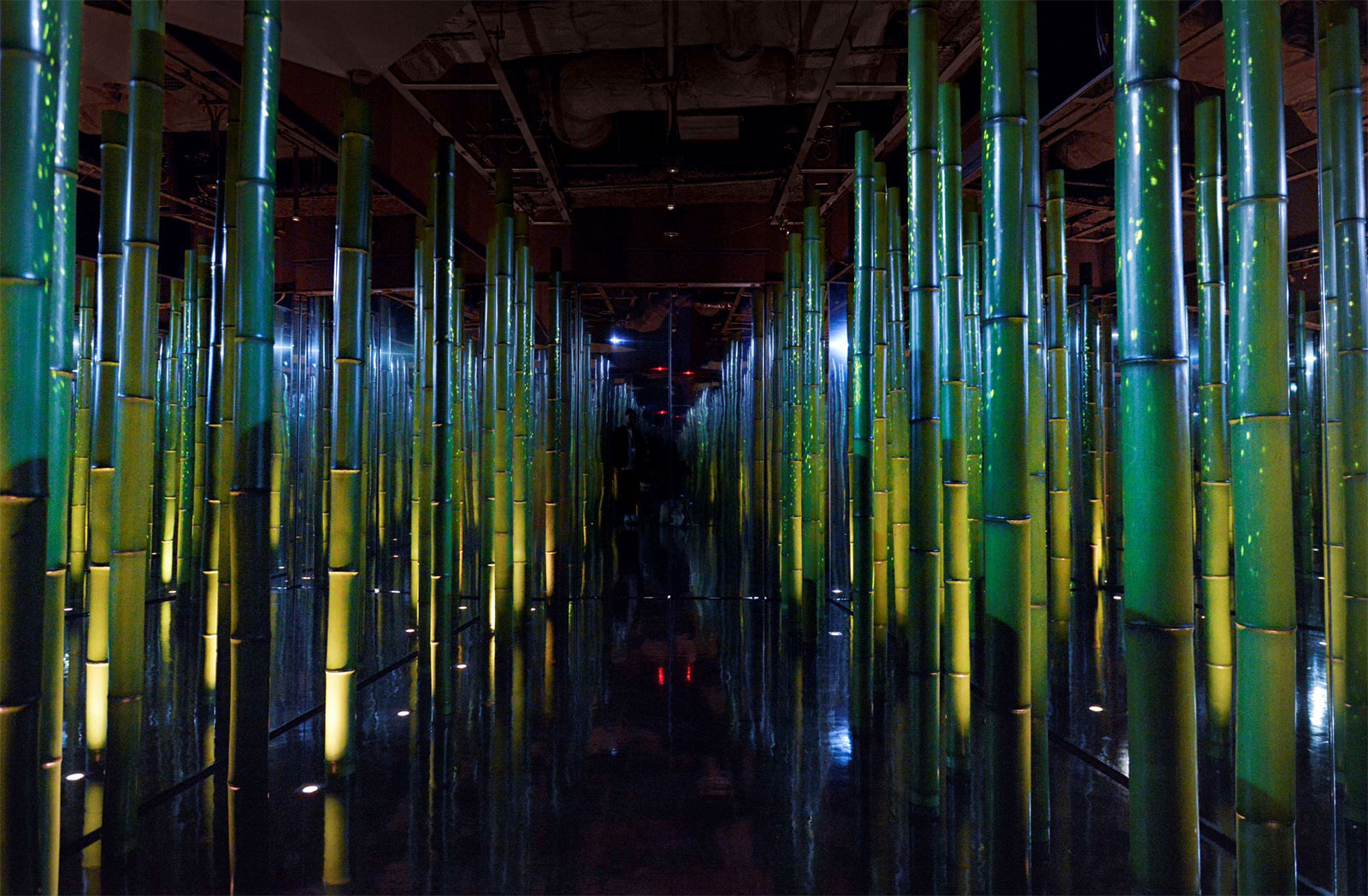
The "mind-changing tunnel" at the Greenhouse
Of the Greenhouse's six rooms, five are themed around wakei seijaku: the "harmony room," the "respect room," the "serenity room," the "calm room," and the "inspiration room."
The "harmony room" has a whiteboard on one wall, a circular chair, and a large Japanese-style light in the center of the room, creating a free atmosphere for friendly discussions.
The "respect room" has low sofas and theater-style seating, allowing visitors to choose where to sit based on their mood or purpose. The concept behind it can be described as "respecting others and keeping oneself discreet" and the room is designed to allow people to listen to the opinions of others without feeling self-conscious.
The "serenity room" is furnished in white, and the carpet is designed to resemble sand patterns in a stone garden. Visitors are encouraged to purify their minds and bodies so that they can "think lightly."
The "calm" and "inspiration" rooms can be connected and feature views from the outer gardens of the Imperial Palace to Hibiya Park. In addition to discussions, these rooms are also used for lunches during sessions and for evening receptions.
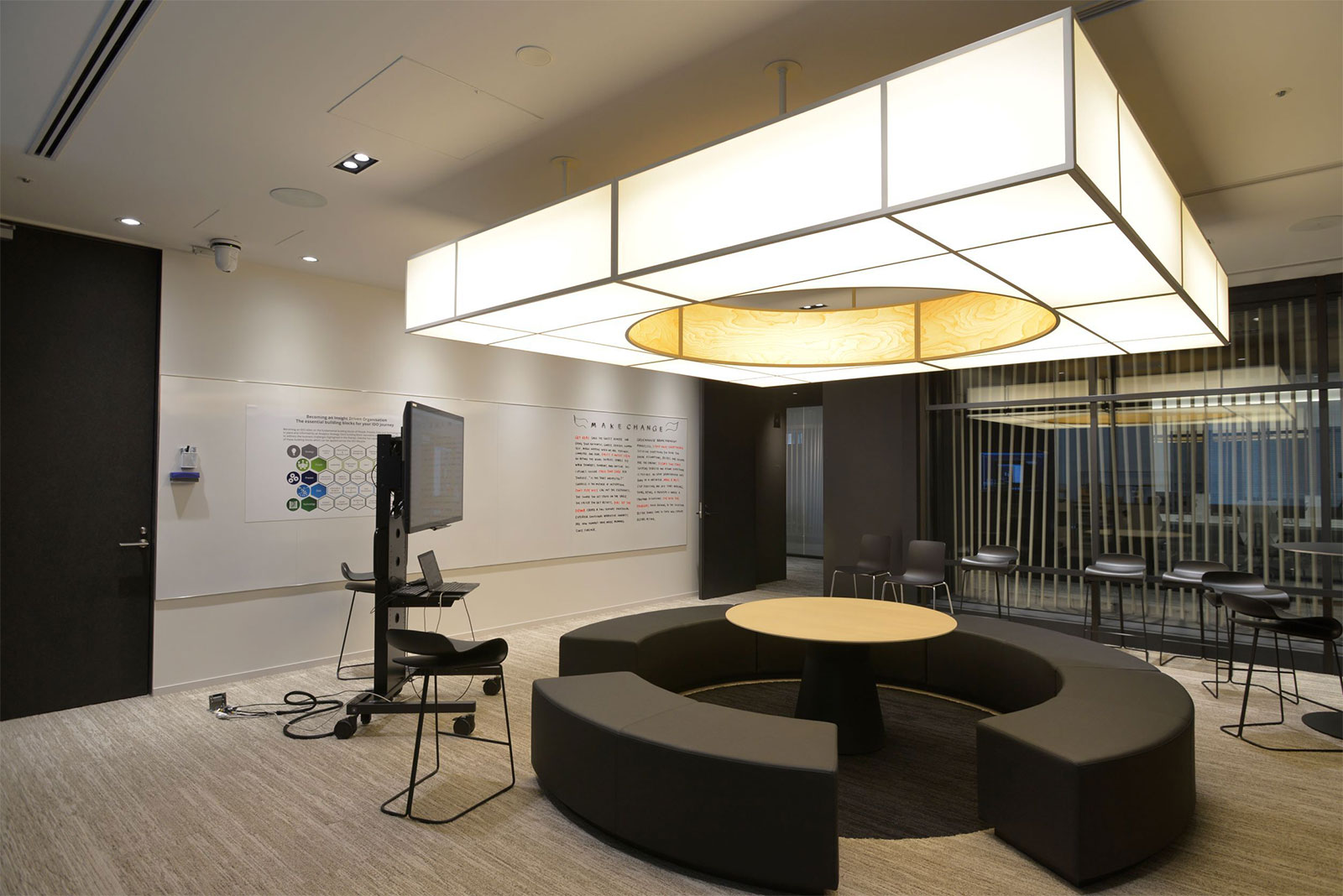
The "harmony room" featuring Japanese-style lighting
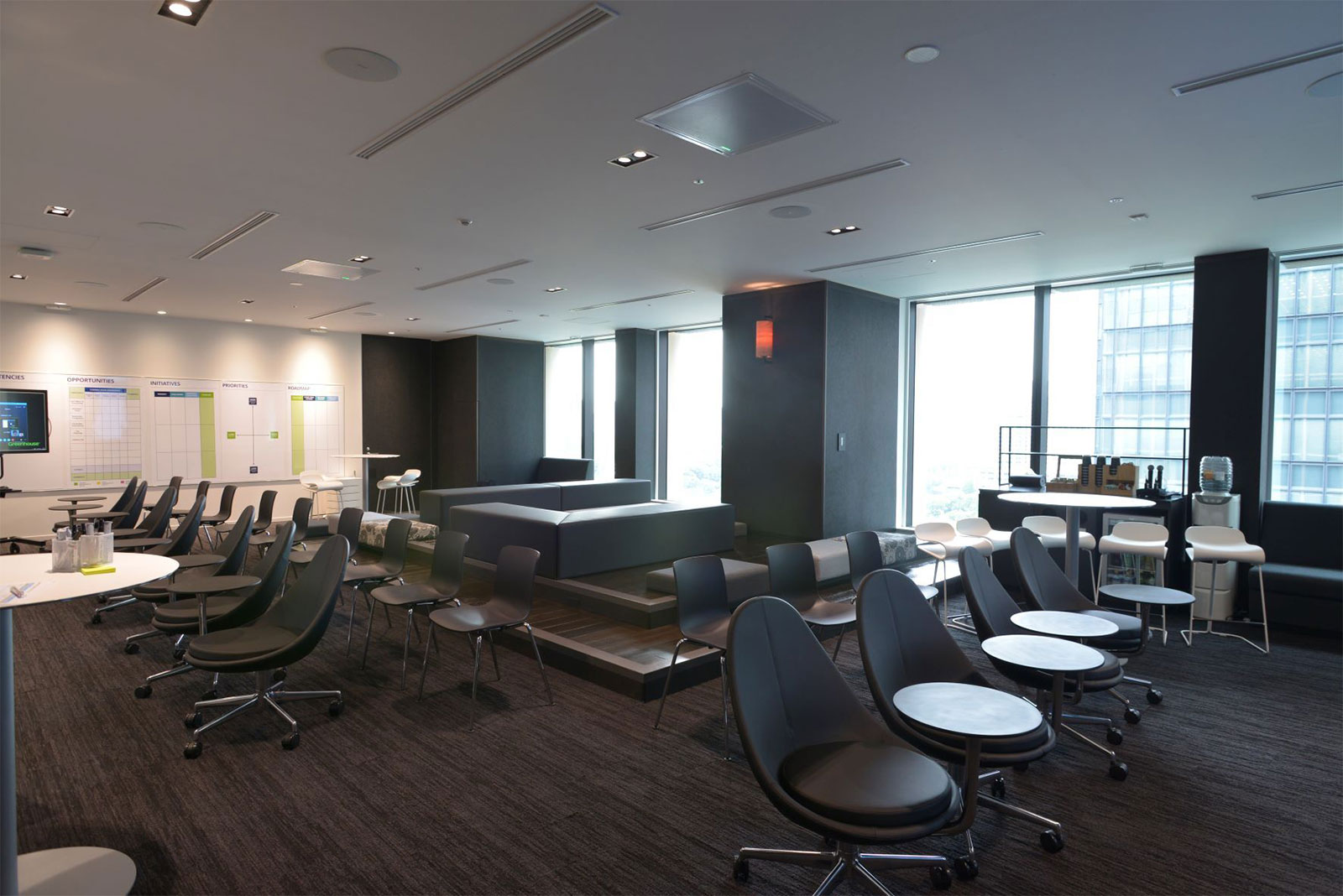
The "respect room" with various chairs
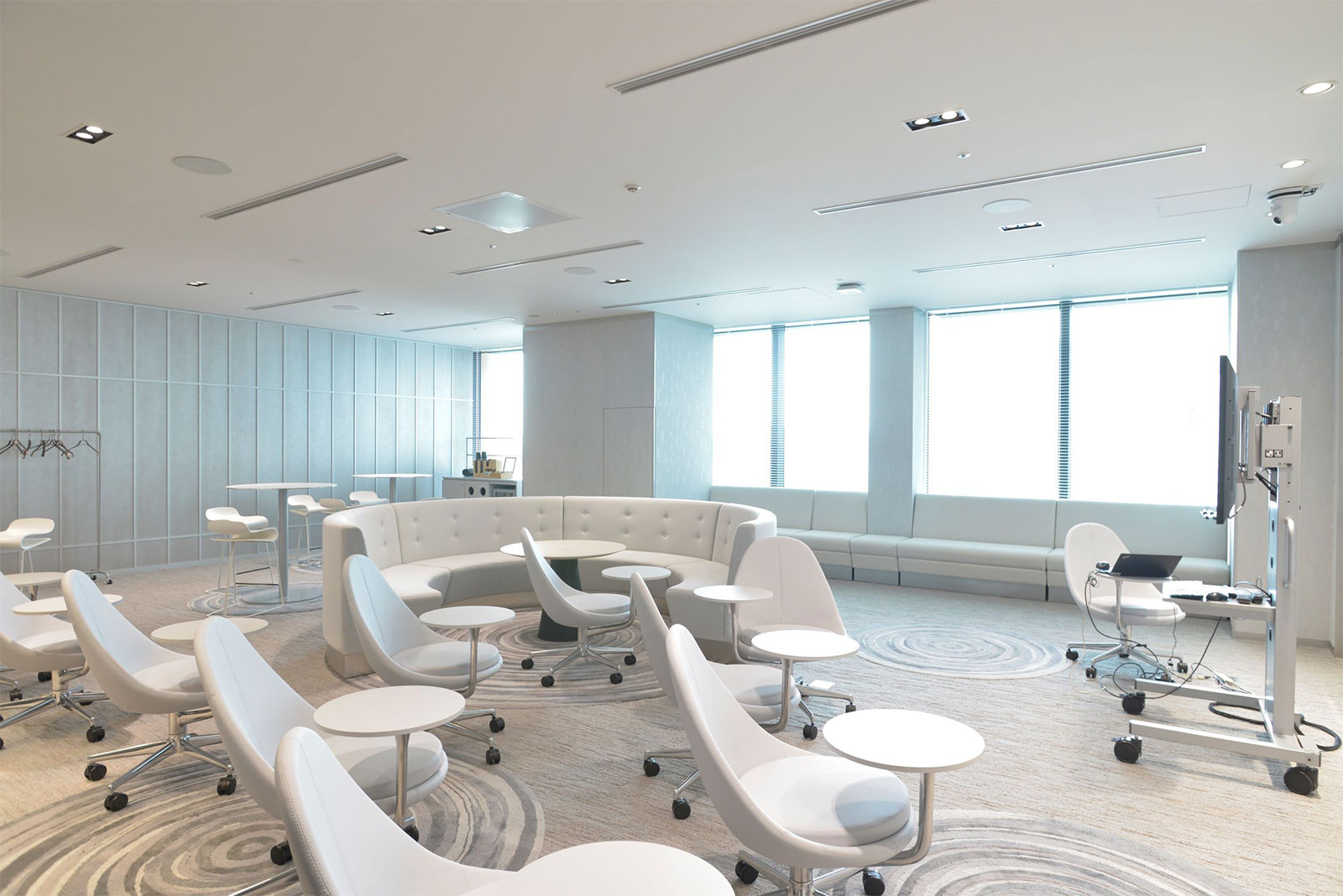
The "serenity room" with white as the basic color
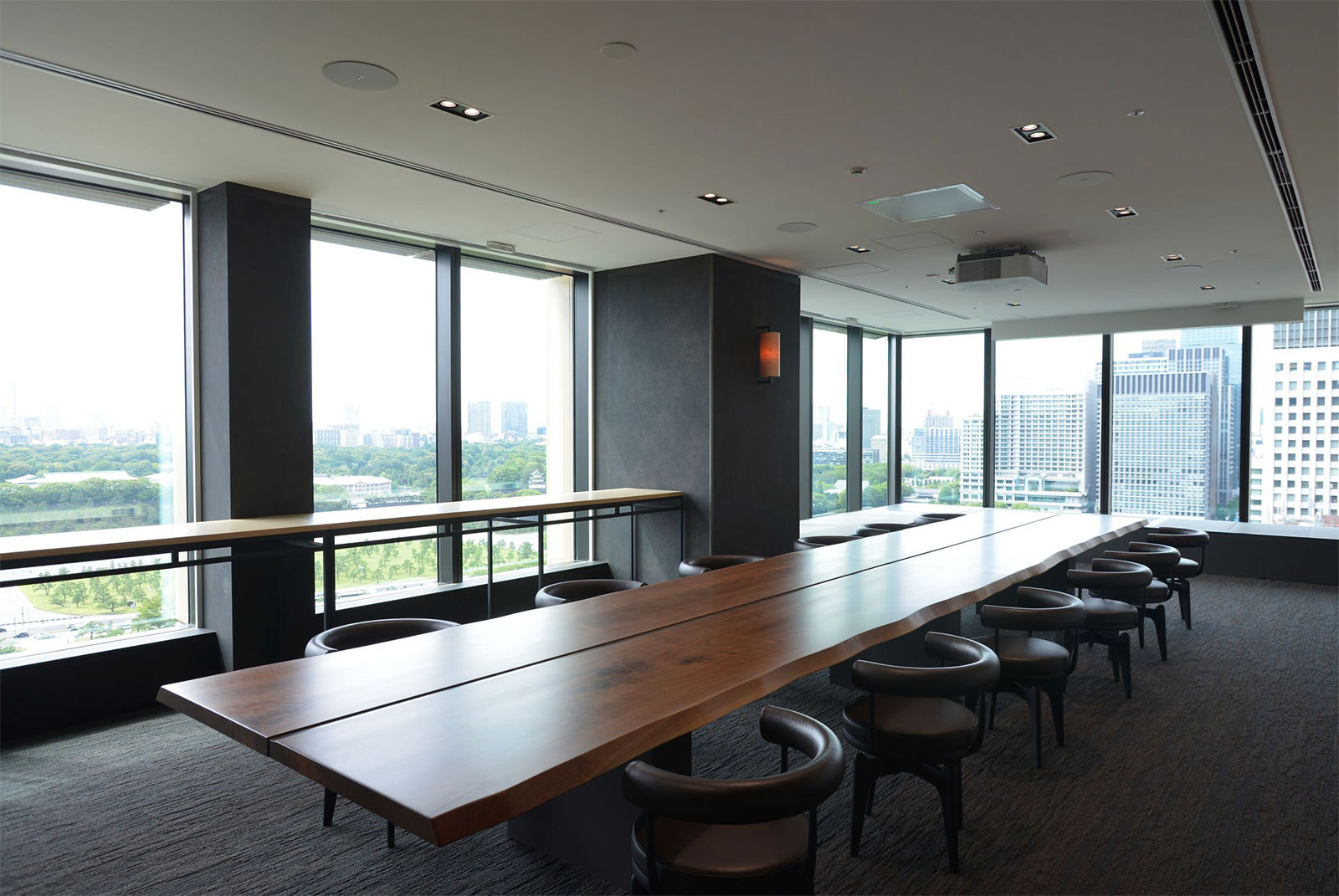
The "calm room" that boasts an outstanding view of the city
One of the features of the rooms is the ambient sound system, which plays high-resolution recordings of murmuring rivers, birdsong, and noises from Koyasan, Yakushima, and other natural locations around Japan, in accordance with the season and time of day. The lighting in the room also changes so that the color of the light appears different in the morning and in the evening.
The sessions and workshops held at the Greenhouse are mainly for corporate chief officers known as "CxOs".
A mechanism that encourages reflection and awareness among the top management
The Greenhouse is characterized not only by such "hardware" innovations. The sessions and workshops held at the facility, in other words, the "software," are characterized by unique programs. The programs are provided by trained and certified facilitators based on a framework originally developed by the Deloitte Tohmatsu Group. One such program is "the CXO Transition Lab," a full-day, discussion-based workshop developed in the United States in 2001. More than 10,000 CxOs, including about 1,000 globally each year, have experienced the lab thus far.
"The lab has many rules," says Yusuke Kamiyama, head of Deloitte Greenhouse Japan, Deloitte Tohmatsu LLC. For example, the night before a session, the visiting executives and our facilitators have dinner together.
"Usually, it is after the session that people would go out for drinks, but the lab's dinners are different from the so-called drinking parties," Kamiyama emphasizes. It is positioned as an opportunity to learn about each other's values and enhance the value of the next day's session. "For this reason, we ask CxOs to share their own experiences that have influenced their lives and thinking, rather than to engage in small talk or company-related conversations. It is the role of our facilitators to draw out these stories," says Kamiyama.
The purpose of the lab is to encourage reflection and awareness by the executives themselves. As an example, Deloitte staff members interview the participants' company executives and shareholders in advance to gather comments. On the day of the lab, these comments are used as suggestions in the course of questions and dialogues to provide participants with an objective outside voice and awareness.
The CXO Transition Lab targets not only current top management but also CxO candidates.
"CxOs, especially in Japanese companies, are always busy with their daily operations," Kamiyama points out. "They are so busy that they sometimes stop thinking or postpone making decisions even when they should be exercising leadership in day-to-day management. The goal of the lab is to give these CxOs time to face themselves, to enhance their perspectives, and to encourage decision-making."
Through the lab at the Greenhouse, participants discover their own management agenda, create action plans, and link them to the growth of their companies. Deloitte is contributing to the solution of management issues through both the hardware of the Greenhouse, which is based on the concept of a tearoom, and the software of the lab.
More examples of how tearooms are used in business will follow.
For further details, please contact:
Nikkei Business Publications, Inc.
NIKKEI BP
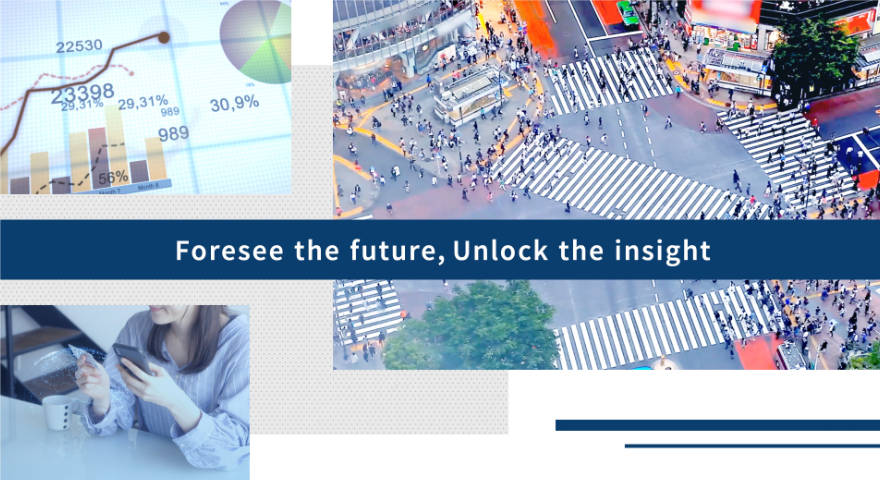
"Foresee the future, Unlock the insight" is the expression that describes our mission. As Japan's leading BtoB media service, we meet diverse business community needs in the three key categories of "management," "technology" and "lifestyle."
See More
